(Editor’s Note: Teaj here. Today you’re in a for a special treat! While I’m unpacking a brand new mic pre, my ol’ pal Charlotte will be tutoring us in “how to make a song”, as she puts it.
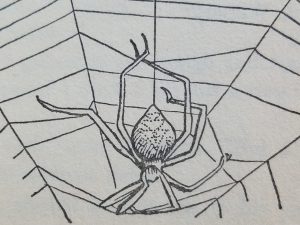
She’s really good at it and I know you’ll dig her methods. I asked her to share with us because it’s not often that someone comes along who is a good friend and a good writer.
Charlotte is both. Enjoy!)
Salutations! I’m Charlotte. You may have heard of me and my famous “Web” from a while back. My friend Wilbur and I created quite a stir in our little town with our unique method of communications.
I still get fans asking for my trademark “eight signatures” wherever I go because of that. Today though, I’m here to teach you how to make a song. Didn’t know I was into that too? Well… one book can’t tell you everything!
Oh, and if you’re wondering how I’m able to write you this when I’m supposed to be… well, gone, the answer is simple: every 65 years a spider’s essence, or “Spinneseele”, is reincarnated into another web-working wunderkind.
Back in ’52 when I exited, stage left, I knew my comeback was inevitable. This time I’m extending my writing into the musical kind, so look out, barnyard slackers… Charlotte’s baaaaack!
Spin Your Web
Everyone knows the glory of a spider is her web. The intricasy and incredible complexity of our gossamer nets cannot be equaled in the animal world!
Humans have come very close to producing our thread, but even now have never quite equaled the properties of what we create – our silk has a tensile strength greater than steel and tougher than Kevlar!
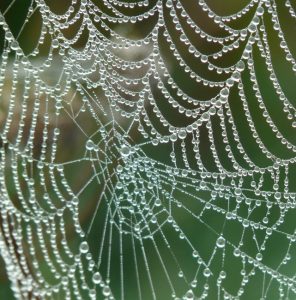
As such, it’s the perfect tool for catching things and keeping them. After all, a girl’s gotta eat, right?
To begin writing songs, you will need to produce your own ‘web’ – something to catch and keep ideas for songs upon which you can build and complete your own classic tunes.
I happen to know that your WEB-master and my friend Teaj, has kept many journals, cassettes, mini-tapes, CDs, palm-sized digital recorders and, today, smart phone recordings, that have captured literally thousands of ideas for his compositions.
Like his tools and my webbing, you need to carry with you, wherever you go, something like these to speak into or write upon that becomes your go-to place for storing great song ideas.
If you do this, you will never run out of places to start writing, which is often the most difficult part. The blank web is the most daunting, so keep yours full! Then you’ll never have to try to create from scratch something to write about.
FAW Ago & High Away
If you are going to write songs with a vocal, then that means by default you’re going to have to write lyrics. AAach! I can hear some of you trembling now. “But I’m not good at writing words. How can I even start?!” Trust me, you’ll have no problem if you use the method I’m going to give you.
The method that both Teaj and I use often in our writing, in addition to capturing ideas on the fly (that phrase always makes me hungry) or writing lyrics straight from our poetic brains, is called F.A.W., or Free Association Writing. There are two kinds, the Textual F.A.W. and the Tonal F.A.W. We’ll begin with the Textual. Here’s how it works:
Set in front of you a blank piece of paper. Or, if you prefer the digital method, set yourself in front of your keyboard with a blank document at the ready.
You may have an idea in mind of what you want to write about, or you may have nothing; it doesn’t matter, because either way will work.
Next, at whatever moment you choose, you simply start writing.
But here’s the catch: you may not stop writing until you have filled a page completely or TWO pages completely. No exceptions!
You. May. Not. Stop.
Once you have filled the page, or two, you may relax, take a deep breath and shake your hands (or spider legs) in the air to rid them of the ‘worked-out’ feeling you’ll probably have.
Now, believe me, I’ve done this hundreds of times and I know you will get to a point on the page where you can’t think of anything to write. That’s okay – write that!! Meaning actually type out “I have no idea what to say here. I really don’t…”
Whatever words fill your head, no matter how unrelated, asinine, pedestrian, vulgar (yes, that pops up occasionally), confusing, metaphysical, ordinary or hippie-sounding….write them down!
The goal here is to start getting your mind released from the confines of its usual “editor”. You know the one: it’s that voice that frequently tells you your thoughts are too this, or too that, or not worth sharing, or dumb, or…
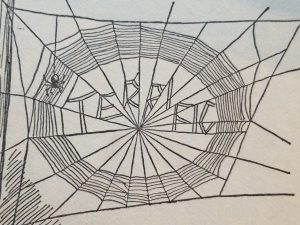
You get the picture. During the F.A.W. stage there are no bad ideas. They are all terrific. Radiant. Impressive.
Don’t let your mind tell you otherwise. Release yourself from the stranglehold of the “Office of Self-Doubt”, that for too long has pushed you around. You don’t have to take that! You’re some pig!!
Oh, whoops, I mean… you’re SOME WRITER!!
When you have finished this first part of F.A.W.-ing, take a break. Go do something else. Leave it. At least for at least a few minutes.
Sometimes I don’t go back and read what I’ve spun in the corners of my web until the next day.
Abandoning it helps seperate the two roles you must play in the your head and let’s them know you will not ever allow them to speak to or influence each other.
The first role you played was the great superhero “F.A.W. Girl!” (or Guy), where there were no boundaries, no parameters, no off-limits barriers to your progress.
The second role?
Well, once that’s done, you can play the Editor. This is where you’re finally free to get picky.
Get a highlighter if you went the paper route (hey… I had one of those in a way distant past!).
If you typed digitally use the computer highlighter option which is almost always included with any writing software.
What you do now is read through what you wrote. As you do, highlight or digitally “grab and paste” to the top of the page any words, phrases or sentences that sound unique, eloquent, arresting or extraordinary.
If you started your F.A.W. with a specific theme in mind, cull out anything that really helps you tell that theme’s story.
Once these choice, superior lines are collected on a seperate piece of paper, or at the top of your digital document, voilà – you have the beginnings of your song!
If you don’t like much of what appeared in your first F.A.W., try again. Keep trying. If you F.A.W. enough times you will eventually teach your mind to “shut up!” and allow you, unfettered, to unfurl the sails of your creative mind and travel to the inventive islands, inspired reefs and innovative isles that only your personal genius can reveal.
But like Columbus, you must go! Put the pencil to paper, lassie! Type until you ache there, laddie!
There are always new world’s to discover!!
Harmony, Gee I Really Love Ya…
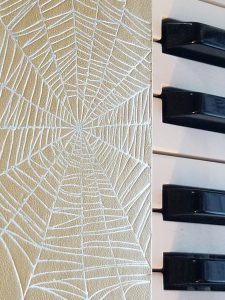
Next I would start putting your words to music. Now, there are two musical anchors you must produce for a song to get everyone singing along to it:
- the CHORDS
- a MELODY
First, let’s look at CHORDS. These will be the notes behind what you sing that harmonize with them and provide emotional color to your three or four-minute journey of sound.
There are three levels of familiarity to chords in music. You must honestly surmise where you place on this list:
- You understand how to make chords and know how to use them
- You understand how to make chords but don’t know how to use them
- You don’t understand anything about chords
No matter which one defines you, it’s no problem. We can get there!
If you are in the first two definitions, you’ll be happy to know that I’ve already finished a whole article just for you that Teaj will be sharing with you soon, probably in the next week. It will really empower you once you spend a little time with it because it explains, in a very easy-to-understand way, how to make sense of chord options within a song.
So hang on… it’s comin’.
If you’re a musician familiar with chords and such, then you probably already have a good idea what you must do. If not, I’ve got a recipe for you. Compose three different chord progressions for the following popular song sections:
- the VERSE
- the CHORUS
- the BRIDGE
These sections are currently in almost all popular songs, so if you want your compositions to be popular (you do want that, right?) then I’d make sure your first songs have each of them represented.
I play the different sections of my web, which have different lengths of silk, to get these sections and the chords I need. It’s hard to hear for humans, but for me… my web is like the world’s largest harp! And every day I’m on it, writing for the world.
Play the each section through, and then proceed through the song stringing all the sections together to make sure they transition well with each other.
How do you know? Use this technique: record the whole thing and see if it sounds right to you when you listen back to it objectively. If not, change it.
Then record it again. Repeat this process until the whole thing sound killer to you. Only then can you move on to… the melody!
It’s Whispered That Soon, If We All Call the Tune…
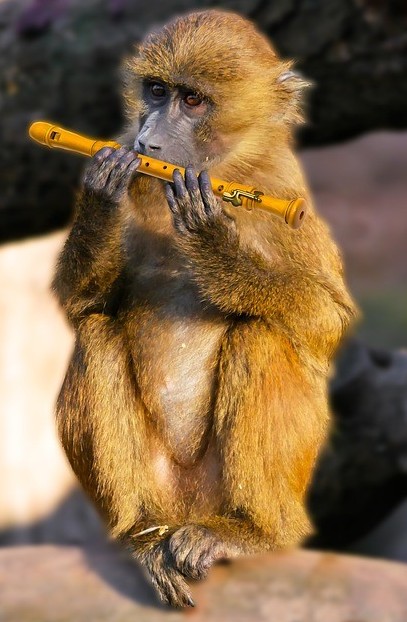
The MELODY is what you are singing along with your words. If someone whistles your song, the notes they blow out would be your melody.
There are two ways you can spin a melody onto your lyrics:
- humming or singing
- playing notes on an instrument
Which one of these you use depends mostly on whether you play, or have, an instrument (besides your voice) or not.
If all you have is your voice, then your first step is to tell your internal Editor to shut up once again and start improvising melodies over your lyrics. This is the Tonal F.A.W. I mentioned earlier. Because we’re working with sound instead of words, you’ll need something to record what you come up with, like your phone. Record while you sing one, then stop.
If you are just starting out, I suggest coming up with at least three different melodies for your words. This gives you some choice when you bring out your Editor again and will probably cause you to have better quality of music up front than if you only came up with one option.
After you’ve recorded three different melody options, do the same as with your earlier Textual F.A.W.s and leave it. Go away. Do something else. Swing on a barn rope. Talk to a pig. Bathe in buttermilk (it does wonders for the skin, I hear). Just don’t listen to it now.
Later come back and listen to all three. I guarantee you one of them will stand out as a better melody. That’s the one to use!
Fully Anchoring Your Web
Now that you have lyrics, a melody and chords you are only lacking one thing – a recording! The only way a song truly exists these days is if it is recorded and put out on the Web for all the world to hear.. and know… and (hopefully!) love.
If you don’t already have it, get some recording software (Audacity is free!) and go record that bad boy!!
First put down the chords and make sure they sound perfect.
Then overdub (to record on a separate track, over the chords) your words sung to your melody.
This is where you truly know if your song is ready for the world, because if something isn’t quite right in your vocal, instrument or words, the recording software makes it obvious.
If you are satisfied with what you hear, then you know have a good, quality song that, like a good, quality web, is anchored in at least four places: your lyrics, your chords, your melody and your recording.
Is this truly all you need to make your impact on the world huuuuuuge (Trump quote notwithstanding)?
Yes, indeed. Oh, yes, indeed!
Conclusion
My song “Sleep, Sleep, My Love, My Only” has done especially well over the years, but it too was once just an idea I had spun in a corner of my web. It took effort, perserverance and study to get it to the level of excellence it ended up at.
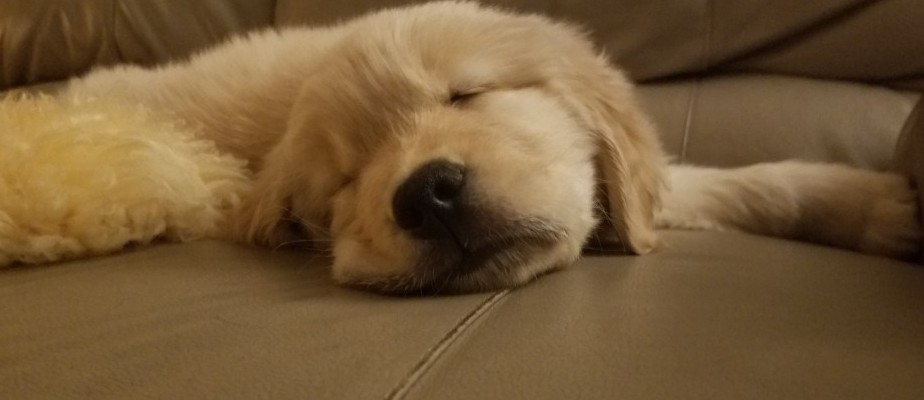
My good friend E.B. really likes that one, as does Teaj. And his dog Pippin!
Songwriting is ever the wonderful adventure, but don’t be fooled -it’s also hard work, and demands undaunting focus and dedication.
Like anything though, it gets easier the more you practice. So keep studying, keep trying, and never stop believing you can make a song too.
As Teaj always says:
“Writing a song is easy.
Writing a good song is hard.
Writing a great song… well, you won’t even know if you’ve done that. But the world will… !!”
Keep at it, fellow composers, and someday you too may produce a “magnum opus” just like I have so many times (in more ways than one!).
Hope to hear from you. If this article helped, comment below and let us know. If you have questions, Teaj is here always, and I’ll check in from time to time.
Now, go… spin… songs!
Charlotte

(Editorial note #2: Teaj would like to sincerely thank E.B. White and his wonderful book, “Charlotte’s Web“, without which my childhood would have been much less inspired. Indeed!)
Hey, Arian! Here’s PART TWO to the post you read.
Enjoy, my musical friend! lol
Teaj
Glad to hear of your F.A.W. appreciation, Arian. I use it often, and I also find it a very liberating tool for teaching my private music students how to come up with compelling, unique lyrics that are never cliche because they’re a natural selection of their most creative inner self.
May we cross paths indeed! Keep an eye out here for what I’m up to. Maybe we can make that happen and swap G.A.S. stories and jam!
I love the FAW method for writing lyrics. I’m very much into the whole concept of JUST DOING IT! No filters, no thinking, no self-judgement. Most people block their own creativity and avoid starting great ideas because of egoistic thoughts like “it’s not cool enough” or whatever. Hats off to a fellow music lover in the house. May we cross paths some day!